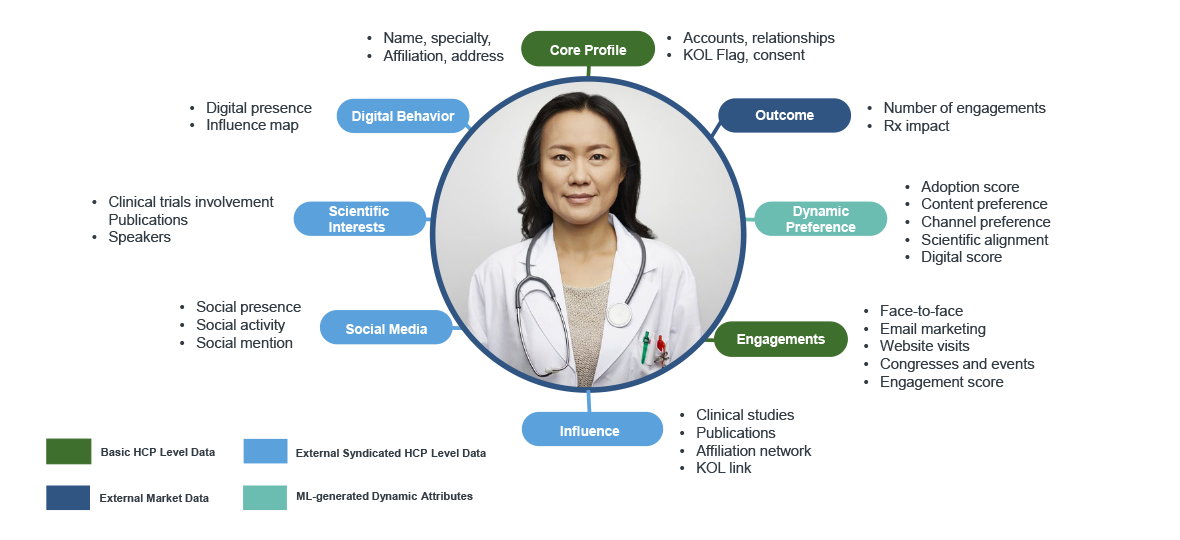Keep your field force focused and productive


















- Locations
- United States
- US Blogs
- Personalization: Building an Omnichannel Approach for Life Science Companies
Who wouldn't appreciate receiving an email precisely answering the question you have at just the right time – one that is tailored to your specific needs and preferences? In the life sciences industry, personalized communication can be a key differentiator providing valuable content to healthcare providers at the right time. According to a pharmaceutical industry report by EPG Health1, less than 20% of HCPs are getting personalized experiences. Nearly 80% of HCPs believe they’re experiencing a one-size-fits-all approach. By creating a personalized omnichannel experience for HCPs, companies can differentiate themselves from their competitors and build lasting relationships with their customers. So, why aren’t more healthcare companies providing a personalized experience? Many simply are challenged by where and how to begin.
Personalization doesn't have to be complicated. Simply stated, personalization is the process of using data to engage healthcare providers with a relevant message specific to their interests.
Examples of personalization could include:
- Delivering insights to the field force team to help understand the healthcare provider’s needs or journey
- Emails tailored with first name, last name, and relevant content
- SMS messages that notify the provider of new indications or upcoming events
- Websites showing content relevant to the provider’s area or customer journey
- Details tailored to the healthcare provider’s interest
- Banners based on the healthcare provider's journey
But where do you begin when you have a long list of channels to connect and messages to deliver? Should you start with connecting all the channels and the data? Connecting all the channels may not drive any significant business impact, and data that isn’t actionable or provides no personalization opportunities will be irrelevant. Instead, consider starting small and focusing on key moments in the customer journey which can help add value. Identify high-value customer touchpoints, the relevant data, and the appropriate channels. This approach allows companies to prioritize their efforts and resources toward the most impactful areas, leading to increased revenue and customer satisfaction.
By mapping a customer journey, you can identify relevant content that can assist providers in making decisions and result in a successful personalization strategy for your channels. You can map out key questions, pain points, and relevant content that, when delivered at the right time, can assist healthcare providers, creating a win-win opportunity. An example content map is provided below.

After you have mapped your customer journey, then you will want to collect and connect your key data elements. To start this step, companies build out a customer view with relevant actionable data. The Customer 360 provides a view of the relevant actionable data to drive insights. An example is provided below.

Finally, you will want to map your key data to your insights and then to the appropriate channel for execution. This essential step can be automated through an orchestration engine which combines with rules to deliver specific content to different channels. IQVIA offers an orchestration engine that can quickly be deployed based on your needs. As you advance, you can leverage the machine learning components to drive the best sequencing and delivery.
Providing personalized communication at key moments in the customer journey can provide significant business value for life science companies in the form of improved customer engagement, increased revenue, and efficient resource allocation. By leveraging data, key content, and technology to create a personalized omnichannel experience, companies can establish themselves as leaders in customer-centric innovation and drive success.

IQVIA Next Best – Recommendations Platform
Related solutions
Turn insight into action by surfacing behavior-changing intelligence within daily workflows to deliver the right message at the best time for greater HCP satisfaction.
IQVIA Orchestrated Analytics connects actionable, intelligent insights across commercial teams to empower improved strategic decision making.
Get alignment on what to measure, eliminate duplicative reporting and make complex data easier to manage with our easy-to-deploy analytics suite.
Combine data science, technology, and analytics driven by artificial intelligence to support new efficiencies and business insights -- without additional capital investment.

